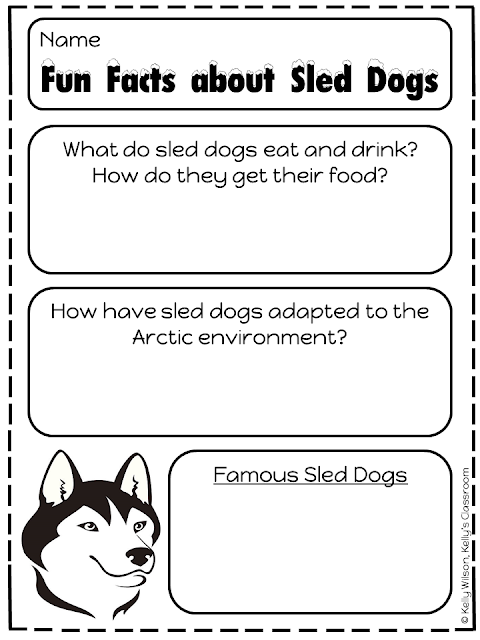A few months ago, I wrote a blog post about
Run Like a Sled Dog
and
Black Bear Goes to Washington
by Denise Lawson. (Run Like a Sled Dog and
Black Bear Goes to Washington are two children's books inspired by a
retired sled dog that Denise Lawson adopted.) That particular post
generated some interest in my readers to learn more about the lives of sled
dogs. What are sled dogs like? What do sled dogs eat? How do
sled dogs manage in the Arctic cold? Keep reading to learn the answers
to these questions and to learn more about these magnificent creatures!
Not every dog can become a sled dog.

There are different 'northern breeds' that can be used as sled dogs.
Samoyeds, Alaskan Malamutes, Siberian Huskies, Alaskan Huskies,
Chinooks, Greenland Dogs, Canadian Inuit Dogs, and Northern Inuit Dogs
are the most common breeds used in dog sledding.

Sled dogs have adapted to living in the Arctic.
Sled dogs have thick fur to keep them warm. Their fur has a
dense outer layer and a softer inner layer for insulation. Their paws
are protected by thick pads, and their fluffy tails allow them to
cover their noses while they curl up in a ball and sleep.

Sled dogs have huge appetites!
Since sled dogs are so active and can run long distances at high speed, they burn a lot of calories. Regular dog food and kibble from the pet store aren't enough to keep them strong and healthy. Sled dogs are fed a special performance kibble with a higher percentage of protein and fat. Many sled dogs in Alaska also have diets that include large amounts of salmon. During long races, sled dogs will eat a carefully selected diet to meet the demands of physical exertion.
Sled dogs have played important roles throughout history.
They were used to carry cargo during the Klondike Goldrush of the
1890s and during The Seven Years War during the 1700s. Most
famously, however, sled dogs helped save an Alaskan town in
1925! A deadly outbreak of diphtheria broke out in Nome,
Alaska. Several sled dog teams had to travel 675 miles to
deliver this serum for the sick people in town.
Animal Research Project
Students as young as first and second grade start learning about
research and reading for information. They also start learning
about animals and adaptations during science. The mini-research
project below is an easy activity that focuses on the basics of sled
dogs and their special adaptations. It can be used while reading
fictional stories... pulling facts from literature... or while reading
nonfiction books of your choice. (You can even find some of the
answers in this blog post!)
To download a FREE copy of this mini-research project (one page in
all), please click on the image above. Clicking this image will take
you to the Teachers-Pay-Teachers third-party website. This is
a FREE download-- no purchase necessary.

Did you enjoy learning fun facts about sled dogs? If so, check
out these blog posts for more fun facts about other animals:



love it tysm 4 these facts i have to write a informitive essay
ReplyDelete